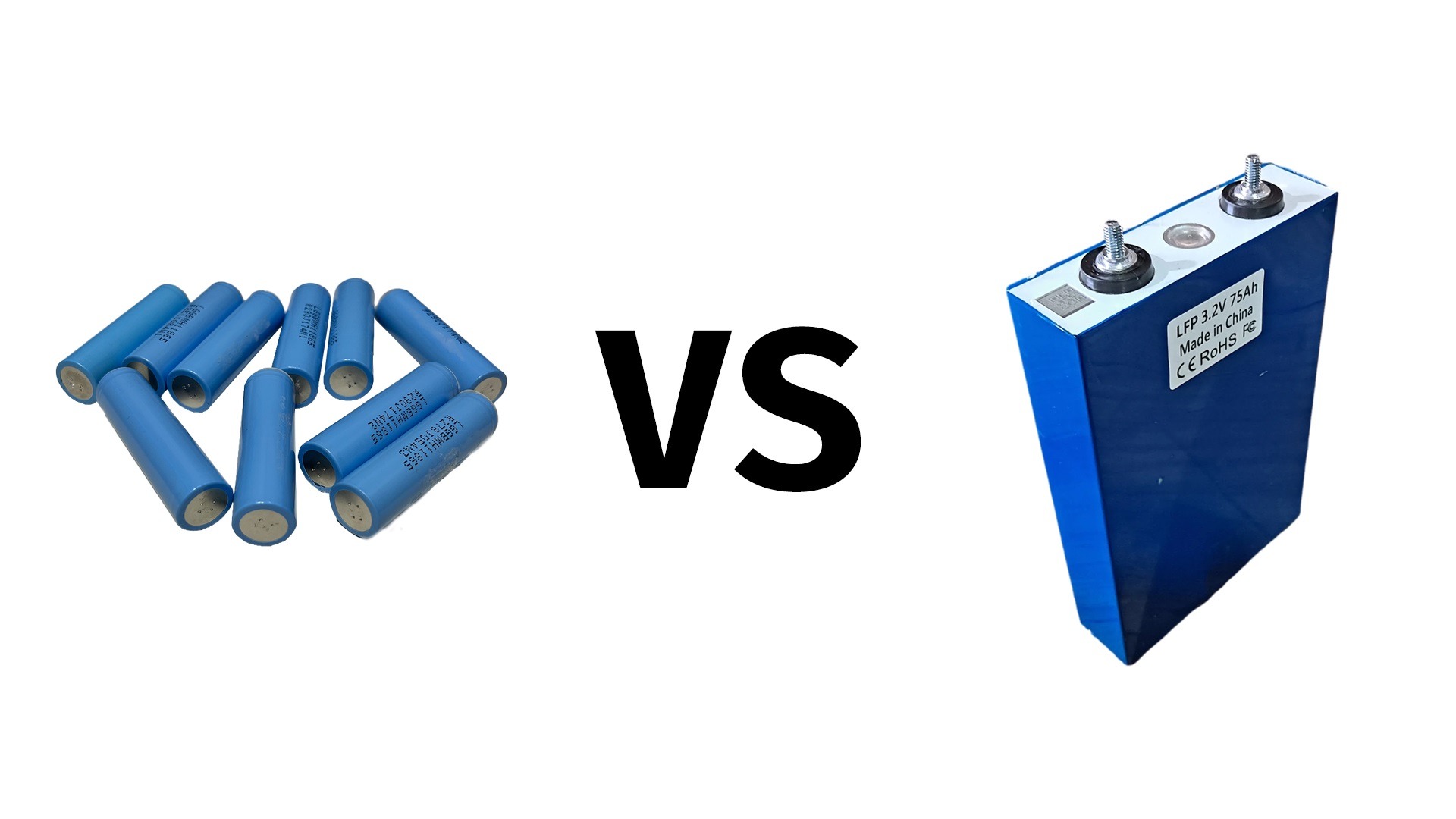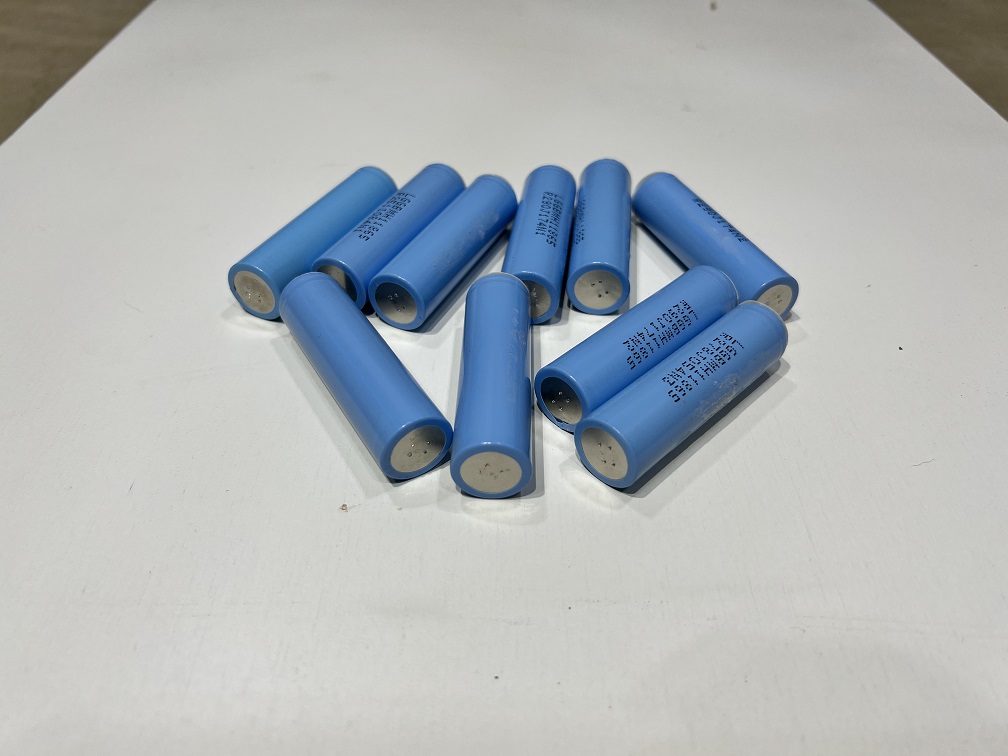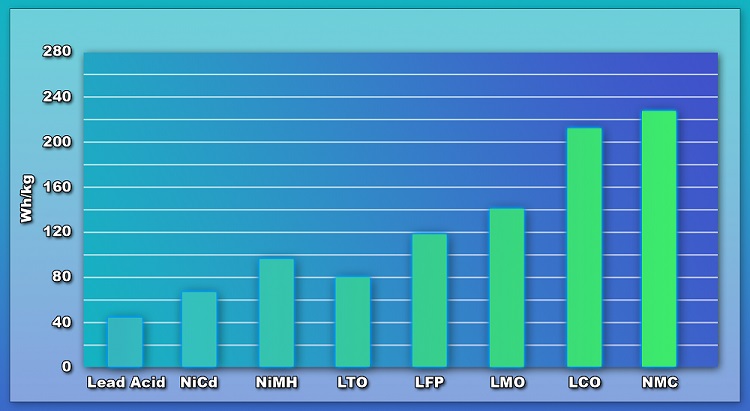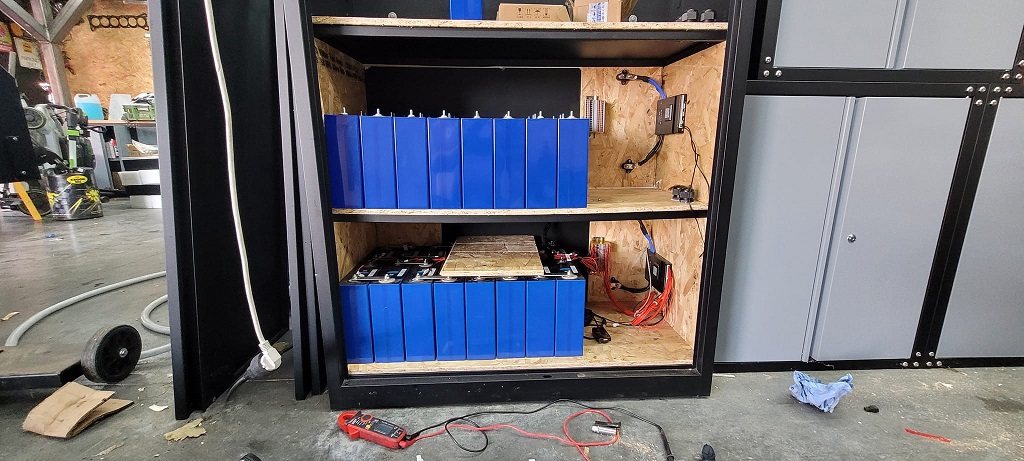
Lithium (NMC) Vs. LifePO4 (LFP) Which Is Best
Table of Contents
Li-NMC (Lithium Nickel Manganese Cobalt) and LiFePO4 (Lithium Ferrous Phosphate) are two of the most common lithium-ion battery chemistries. On the surface, it may seem like they are the same because they both have lithium in the name. There are, however, some major differences between these two battery chemistries that anyone interested in building a battery needs to know.
Both of these types of batteries will perform significantly better than lead acid batteries, but the question remains: Lifepo4 (LFP) or lithium-ion (NMC), which Is best?
When it comes to choosing between LFP or NMC, it depends on the application. LFP cells cant be charged at low temperatures, so if you plan on using your battery at lower temperatures, NMC is the best option. NMC cells are more energy dense than LFP cells, so if you need a smaller battery NMC is the battery type for you. LFP chemistry, however, is much more safe than NMC lithium-ion chemistry and LFP cells are far less likely to overheat. So, if safety is your biggest concern, LFP may be the better option. Also, the voltage curve of LFP cells more closely matches that of lead acid batteries, making LFP the best choice as a lead acid replacement. Another major benefit of LFP chemistry is its extremely long cycle life. Where NMC cells may last 500 to 800 cycles, LFP cells can last 5000 cycles or more.
In this article, we will compare and contrast these two types of battery chemistries. We will highlight the advantages and disadvantages of each one so you can get a better handle on which one to use.
What Is The Difference Between Lithium NMC And LFP Batteries?
Both of these battery types are a subset of lithium-ion batteries. There are some key differences, however, in how they work.
Lithium Nickel Manganese Cobalt Batteries
NMC batteries, also known as Li-NMC or LMNC batteries, use a cathode made from LiNiMnCoO2 (Lithium Nickel Manganese Cobalt Oxide). This is, as you would expect, how they get their name. The properties of the cathode material are what sets this type of battery apart from LFP batteries.
Lithium Ferrous Phosphate Batteries
LFP batteries use lithium ferrous phosphate as the cathode material whereas NMC batteries use lithium nickel manganese cobalt oxide.
What Do Li-NMC Batteries And LFP Batteries Have In Common?
For starters, they are both lithium-ion batteries. A lot of the time, the two battery technologies are referred to incorrectly. For example, it's common in a conversation for someone to say 'Are you using LFP or lithium-ion?' This common question, however, is based on a misunderstanding. NMC batteries and LFP battery chemistries are both subsets of lithium-ion batteries. In both batteries, electricity is generated using the flow of lithium ions.
The main difference between the two is the materials used for their cathodes. The anode for both types of batteries is carbon-based. Also, both types of batteries (excluding prismatic cells) are constructed the same way.
How Do LiFePO4 Batteries And Lithium NMC Batteries Compare?
To understand the difference in performance between LiFePO4 and NMC batteries, it's helpful to have a general overview of battery characteristics in general.
Energy Density
The energy density of a battery pack is how much energy a battery can store per unit of mass. Higher energy densities are ideal because that means you can make a smaller battery that stores a lot of power.
Here is the formula for energy density:
Energy density = Battery Watt Hours ÷ Battery weight
So, if you have a 1kWh battery that weighs 10 lbs, then your battery pack has an energy density of 100Wh per pound.
The standard form for energy density is expressed in watt-hours per kilogram. With NMC batteries you will always get higher energy densities compared to LFP. Average energy densities for NMC battery packs are around 150 to 200-watt hours per kilogram. LFP batteries, on the other hand, have a slightly lower energy density. For these types of batteries, you can expect an energy density somewhere between 100 and 150-watt hours per kilogram.
Cycle Life And Overall Lifespan
A battery's cycle life is the number of full charge and discharge cycles it can handle before the battery pack starts to lose capacity. A longer cycle life will always result in a longer lifespan of the battery.
Having a short cycle life can end up costing more money in the long run as you may need to replace the battery more often. So, taking cycle life into consideration is an important step in learning which battery type is right for your project.
NMC batteries have an average cycle life of around 400 to 1000 cycles. This means that in most applications, this type of battery can provide its full amount of power for around 3 to 5 years.
After that point, degradation will start to happen quickly. In contrast, LFP batteries are common to last 5000 cycles or more before they start to degrade. This means that this type of battery can provide sustained performance for 6 to 10 years. After that point, degradation begins but it happens slowly.
Depth Of Discharge
Depth of discharge is the maximum percentage in which a battery can be discharged without causing damage to it.
So, if a battery has a depth of discharge of 60%, its health will start to degrade if its charge level falls below 40%. This means that if a battery has a higher depth of discharge it means the battery has a higher operational range compared to a battery with a lower depth of discharge.
The good news is that NMC and LFP batteries both have a high depth of discharge around 80% to 90%. This figure is much higher compared to lead acid batteries which have a 50% depth of discharge. In addition to the depth of discharge being better in both LFP and NMC, you can use LFP as a drop-in replacement for AGM/Lead Acid batteries.
kWh Per Dollar
The cost per kWh makes a major impact on a battery buying decision.
While it's true that NMC batteries use nickel, manganese, and cobalt which are relatively rare chemicals, the economies of scale kicked in full force making them cheaper than LFP batteries. So, for this reason, NMC batteries are often lower cost than an LFP equivalent.
Safety
Safety is obviously an important factor to consider. Lithium-ion batteries operate at high current levels and can reach high temperatures, so considering lithium battery safety is always an important step.
NMC batteries have stable chemistry but there are some failure modes that can result in the release of Oxygen gas. If this gas is not properly vented, it can lead to an explosion. If this gas is properly vented, it's still extremely dangerous as it results in a fire jet coming out of the battery.
LFP batteries have a much more stable chemistry and have a much easier time handling higher temperatures quite well. LFP batteries can still overheat, but it's much less likely compared to an NMC battery. In addition to this, there is no oxygen gas released in the event of a failure, unlike NMC cells.
This means that LFP batteries are safer than NMC batteries. With that being said, NMC batteries are by no means unstable or unsafe so long as they are designed, built, installed, and used properly.
Self Discharge
Self-discharge is a phenomenon that happens when the internal chemistry of a battery causes the battery to lose energy even when a battery is not connected to any load. The self-discharge rate of a given battery is expressed as a percentage of the full capacity of the battery that gets discharged on its own.
There is more good news here. Properly stored lithium-ion batteries have a self-discharge rate on the order of 3 to 4 percent per month. This means regardless of whether it's an NMC or LFP battery, you can fully charge a battery and leave it on a shelf for several months and it will still have most of its charge. However, it is not good to leave a battery of lithium-ion chemistry sitting idle at full charge.
Conclusion
In regards to ‘LiFePO4 (LFP) or lithium-ion (NMC), which is best?’ - it really comes down to the specific application and your specific use case. Both types of lithium-ion batteries have their pros and cons.
If you are looking to replace a 12-volt system with lithium-ion, then LFP is ideal because 4 LFP cells in series almost exactly match a lead-acid discharge curve. If you need higher power density and an overall lighter battery, then NMC is the better solution. LFP cells can become severely damaged if they are charged below a certain temperature. NMC cells do not suffer from this problem but they are still sensitive to temperature. NMC cells are more compact and there are many more varieties to choose from. LFP is newer and still more expensive than NMC cells.
We hope this article helped you determine which type of lithium-ion cell is best for your application. Thanks for reading!




